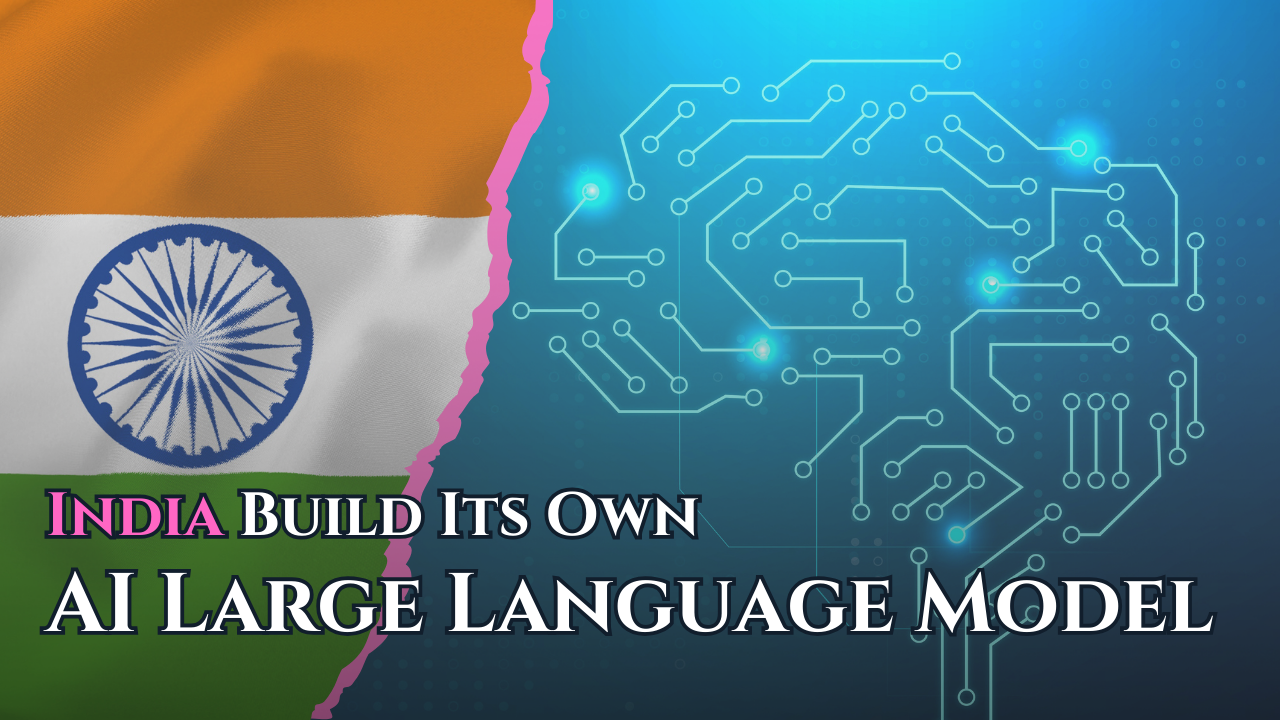Should India Build Its Own AI Large Language Model (LLM)?
Introduction – Large Language Model (LLM)
Artificial Intelligence (AI) has become one of the most transformative technologies of the 21st century, reshaping industries and societies worldwide. At the heart of AI are language models—tools that enable machines to understand and generate human-like text. These models are divided into two categories: Large Language Models (LLMs) and Small Language Models (SLMs). LLMs, such as OpenAI’s ChatGPT and Google’s Bard, are expansive systems trained on vast datasets, excelling in general-purpose tasks. Meanwhile, SLMs are more focused, efficient models designed for specific tasks.
Countries like the United States and China are spearheading the development of LLMs, investing heavily in AI to boost their global influence. For India, deciding whether to join this race by creating its own LLM is a complex but crucial question. This essay explores the nature of LLMs, the advantages and challenges of building one, and why India should consider this endeavour despite hurdles.
What Are Large Language Models (LLMs)?
Large Language Models are advanced AI systems capable of processing and generating human-like text. These models are trained on enormous datasets, including books, websites, and other written materials, to understand patterns in language. By leveraging deep learning—a type of machine learning that mimics the human brain’s neural networks—LLMs can perform various tasks such as writing essays, translating languages, coding, and even analysing emotions.
While LLMs are powerful, they are not flawless. They require significant computational resources to operate, can generate incorrect information, and often reflect biases present in their training data.
Why LLMs Matter for India
India’s potential to benefit from AI, including LLMs, is immense. With a population exceeding 1.4 billion, AI can help address challenges in healthcare, education, agriculture, and governance. LLMs can play a critical role in these areas by providing solutions tailored to the nation’s needs. For instance:
- Healthcare: LLMs can assist in diagnosing diseases, generating medical reports, and translating medical information into regional languages, ensuring rural areas receive better healthcare access.
- Education: AI-powered tools can personalise learning experiences for students and overcome language barriers, helping millions access quality education.
- Governance: LLMs can support e-governance initiatives by translating official documents into regional languages, improving citizen engagement.
Despite these benefits, India currently lags behind global leaders in AI development. Limited computational infrastructure, a shortage of skilled AI professionals, and reliance on foreign technologies impede its progress.
Building an Indian LLM: Opportunities and Challenges
Creating an Indian LLM presents both immense opportunities and significant challenges. Here’s an overview:
Creating an Indian Large Language Model (LLM) offers remarkable opportunities. First, it could support India’s linguistic diversity, which includes over 1,600 languages and dialects. An Indian LLM can help bridge language gaps, promoting inclusivity and better communication across the country. Second, it would boost economic independence by reducing reliance on foreign models, which could become restricted in the future. A locally built LLM ensures India’s autonomy in AI development. Lastly, developing an LLM would help India compete globally in the AI sector, positioning the country as a leader in technology and fostering economic growth through innovation. These opportunities highlight how an Indian LLM can address unique national needs while strengthening the country’s global standing.
However, creating an LLM also comes with significant challenges. Training an LLM requires expensive high-performance hardware, like GPUs, and consumes vast amounts of energy. India’s computational infrastructure is currently inadequate, and restrictions on AI hardware imports from the US make the situation more difficult. Funding is another major hurdle, as building an LLM demands billions of dollars and advanced AI expertise, which is limited despite India’s strong engineering talent pool. Additionally, while India generates vast amounts of data, much of it is unstructured or unsuitable for AI training. Addressing these challenges is crucial if India hopes to succeed in creating a world-class LLM.
The Case Against Building an Indian LLM
Some experts argue that India should focus on leveraging existing open-source models rather than creating its own LLM. Infosys co-founder Nandan Nilekani suggests that building wrappers on top of foundational models is a cost-effective strategy, allowing India to address specific needs without massive investments.
However, critics of this approach warn against over-reliance on foreign models, pointing out potential risks if access to these systems becomes restricted in the future. They argue that developing indigenous AI capabilities is essential for long-term security and self-reliance.
Steps India Can Take
For India to successfully build a Large Language Model (LLM), it must tackle key challenges through a well-organised approach. Firstly, government investment is crucial. Initiatives like the Rs 13,370 crore IndiaAI Mission are a promising start, but greater funding is needed to strengthen computational infrastructure and support advanced research. Secondly, public-private partnerships are vital. Collaboration between the government, private companies, and academic institutions can speed up innovation and drive progress.
Thirdly, education and training should be prioritised. By introducing AI-focused courses in schools and universities, India can prepare a skilled workforce for the future. Additionally, better data management is essential. Standardising and organising datasets will ensure higher-quality data, making AI training more effective. Finally, India needs strong ethical and legal frameworks. Clear policies must address important issues such as privacy, fairness, and accountability to ensure that AI is used responsibly and ethically. By focusing on these areas, India can overcome the obstacles to building an LLM and pave the way for significant technological advancements that benefit the nation and its people.
Conclusion
The decision to build an Indian Large Language Model is not just a technical challenge but a strategic necessity. While the financial and infrastructural hurdles are significant, the potential benefits far outweigh the costs. Developing an LLM tailored to India’s unique linguistic and cultural landscape can empower millions, drive economic growth, and secure the nation’s technological future.
By investing in education, infrastructure, and research, India can bridge the AI gap with global leaders and use technology to tackle its most pressing challenges. The AI race is not merely about technological dominance; it is about shaping a future that serves humanity. India must rise to this challenge, ensuring its voice is heard in the global AI landscape.
Subscribe to our Youtube Channel for more Valuable Content – TheStudyias
Download the App to Subscribe to our Courses – Thestudyias
The Source’s Authority and Ownership of the Article is Claimed By THE STUDY IAS BY MANIKANT SINGH





